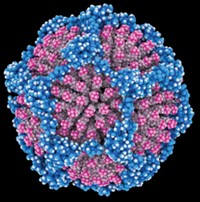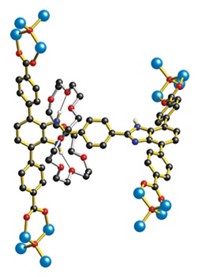Advertisement
Grab your lab coat. Let's get started
Welcome!
Welcome!
Create an account below to get 6 C&EN articles per month, receive newsletters and more - all free.
It seems this is your first time logging in online. Please enter the following information to continue.
As an ACS member you automatically get access to this site. All we need is few more details to create your reading experience.
Not you? Sign in with a different account.
Not you? Sign in with a different account.
ERROR 1
ERROR 1
ERROR 2
ERROR 2
ERROR 2
ERROR 2
ERROR 2
Password and Confirm password must match.
If you have an ACS member number, please enter it here so we can link this account to your membership. (optional)
ERROR 2
ACS values your privacy. By submitting your information, you are gaining access to C&EN and subscribing to our weekly newsletter. We use the information you provide to make your reading experience better, and we will never sell your data to third party members.
Materials
Spontaneous Assembly Revealed
Study elucidates key steps in molecular nucleation and growth mechanism
by Mitch Jacoby
July 10, 2006
| A version of this story appeared in
Volume 84, Issue 28

Peruse a recent issue of your favorite chemistry journal and the phrase "self-assembled" is sure to show up repeatedly. The reason for the popularity is no secret: Molecules that arrange themselves spontaneously into neat films and other structures are convenient and useful in many research areas. Yet despite the ubiquity of self-assembling systems in science, little is known about the molecular mechanisms that govern assembly processes.
Now, scientists in the Netherlands have uncovered some of the elementary steps in a solution-phase system in which π-conjugated molecules organize into helical structures. The study probes the dependence of various states of molecular aggregation on temperature and reveals a crucial role played by solvent molecules in the assembly process. The investigation broadens understanding about the formation of supramolecular structures and may provide new routes to synthesizing complex nanostructured materials.
Like crafty kids with construction toys, researchers in chemistry and other fields have demonstrated a knack for using molecules to fashion a variety of structures such as rods, tubes, helical geometries, and other complex shapes. Unlike children, however, scientists rely on synthesis methods in which molecules form various structures spontaneously. But the molecular-scale events that underlie those methods have remained poorly understood. So chemists at Eindhoven University of Technology devised a model self-assembling system and used a number of analytical methods to probe the step-by-step manner in which the molecules nucleate into helical fiberlike structures.
The research team, which includes Pascal Jonkheijm, E. W. (Bert) Meijer, Albertus P. H. J. Schenning, and Paul van der Schoot, focused on paraffin solutions of oligo(p-phenylenevinylene) derivatives (OPV-x). The molecules are chiral rigid-rod chromophores that contain an ureidotriazine group tailored for hydrogen bonding at one end of the molecule and a bulky tridodecyloxybenzene group known to support columnar self-assembly at the other end.
On the basis of measurements made via circular dichroism spectroscopy, UV-visible spectroscopy, and other experimental and computational methods, the team observed that, as the solution cools slowly from 375 to 275 K, the molecules form hydrogen-bonded dimers that gather into small disordered stacks of 10 to 15 dimers. Upon further cooling, the molecules undergo a transition to form chiral nuclei—the "seeds" of helical structures—consisting of roughly 30 dimers. As the solution temperature continues to drop, the aggregates become elongated and ultimately assemble into clusters of helical nanometer-sized filaments (Science 2006, 313, 80).
A key finding of the study is that solvent molecules are not merely bystanders that remain passive during molecular assembly. In contrast, the team proposes that an organized shell of solvent molecules serves to lock in the aggregate structures and guide the molecules along the assembly process toward the final products.
In a commentary appearing in the same issue of Science, University of Pennsylvania chemists Virgil Percec and Mihai Peterca and Goran Ungar of the University of Sheffield, in England, note that the study illuminates important similarities between solution-phase self-assembly processes and phase transitions commonly associated with ordered solids and liquid crystals.
Additional studies along these lines will help self-assembly of complex functional nanosystems approach the level of structural and functional precision encountered in biological systems, they say.







Join the conversation
Contact the reporter
Submit a Letter to the Editor for publication
Engage with us on Twitter